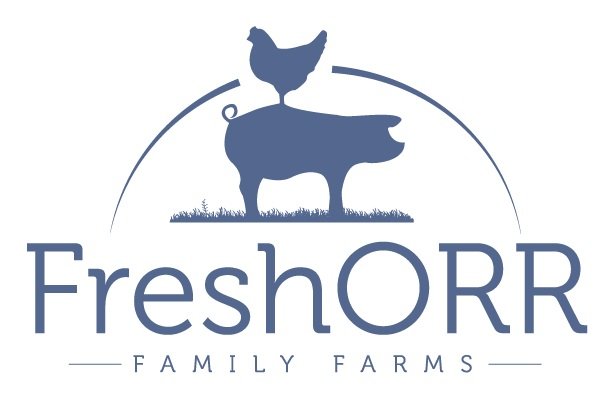Surprising things to know about the color of your eggs yolk.
My father in law will often refer to my kids as ‘A good egg’ and lately it had me thinking… what makes for a good egg? For me, it’s definitely the taste and color of the egg, which I’m sure is the same for you! I mean, who wants to eat a bad tasting egg and if you had to choose between a dull yellow egg yolk or a vibrant orange one, which would you pick?
Well what if I told you the color of a yolk can be manipulated by additives added to a hens feed?
Really, it’s true - there are companies and farmers out there that use this practice to help enhance the appearance of their eggs, especially when the hens don’t have a natural diverse diet which includes grass and bugs... these hens are typically kept indoors, like a barn.
Just to be clear, hens should not be confined to a coop or building - the coop should only offer protection from the elements, predators and a safe place to roost - not a permanent place they never leave.
The yolk is the most nutrient-bearing part of the egg.
"Some studies show that darker and more colorful egg yolks, especially from pasture-raised hens, can have more omega-3s and vitamins due to the more natural feed the chickens eat," says Rachel Paul, PhD, RD from CollegeNutritionist.com
I certainly wouldn’t be pleased to find out that the nutrient-dense egg I thought I was feeding my family was really just a manipulated yolk to give a more appealing color appearance… This is exactly why a relationship with your farmer is very important!
We do NOT enhance our egg yolks color in anyway.
As a matter of fact the yolk color from a pastured-raised hen should change color throughout the year and even vary amongst hens themselves. Yolk color changes with the seasons unless the hens are raised in a climate which allows for grass consumption year round.
grass and it’s role in the color of the yolk.
During winter, grass isn’t dead but rather dormant, which means it holds all it’s nutrients in its roots so it can feed itself though out winter. When spring finally arrives, the goal of grass is to produce as much energy as possible up through it’s stem and leaves to capture as much chlorophyll from the sun to produce a grass seed. During this time, grass is its most active and most nutritious when it’s growing.
Carotenoids are yellow, orange, and red organic pigments that are produced by plants and grass. They give the characteristic color to pumpkins, carrots, corn, tomatoes, as well as canaries, flamingos, salmon, lobster, shrimp, and egg yolks.
According to Dr. Rajesh Kumar Sigh, a livestock and poultry consultant “Carotenoids are natural compounds present in animals and plants. It is well known that birds are not able to synthesize carotenoids, and thus these essential compounds must come from their diet. Carotenoids, and more specifically xanthophylls (carotenoids containing oxygen atoms within their molecules) give the egg yolk its natural color.”
High amounts of xanthophylls are found in the young leaves of the most green plants... bring on Spring!!
Here is a little science lesson for you… xanthophylls is an accessory pigment which absorbs the wavelength that chlorophyll cannot absorb. It serves as a ‘sunscreen’ preventing damage to the plant.
The amount of xanthophylls found in humans and the animals we consume is derived from the plant source they consume… We are what our food eats!
According to Sarah E. Thompson and Elizabeth J. Johnson, Advances in Nutrition, Volume 9, Issue 2, “dietary intake [of xanthophylls] is associated with decreased risks of cardiovascular disease, age-related macular degeneration (AMD), cognitive decline, and certain cancers.”
During the winter there are less xanthohylls plants available for our hens to eat. They fill up more on their locally raised and roasted NON-GMO feed, along with hay and some kitchen veggie-scraps, the same way we eat what’s ‘in season’.
This is a good thing, I mean a good egg!
So don’t be alarmed if you find your FreshORR Family Farms eggs are a little paler, especially as we get to the end of winter. Our egg yolk color seems to be noticeably lighter between March and April just before the grass begins to flourish again.
This is a good thing! It means our hens are truly pasture-raised and have access to forging and feasting on natural, God-made goodness. They are not confined to a coop ever and are rotated to fresh grass regularly except in winter when the grass is dormant. This. This is what results in a good egg!! A good tasting and beautiful, nutrient-dense egg!
We’d love for you to give our eggs a try for yourself! Just click here to place your order.
Come see how our hens are raised next time you’re out to the farm and grab a dozen eggs while your at it.
We hope to see you soon! Until then we pray God is with you and showering you with blessings.
-Gina



